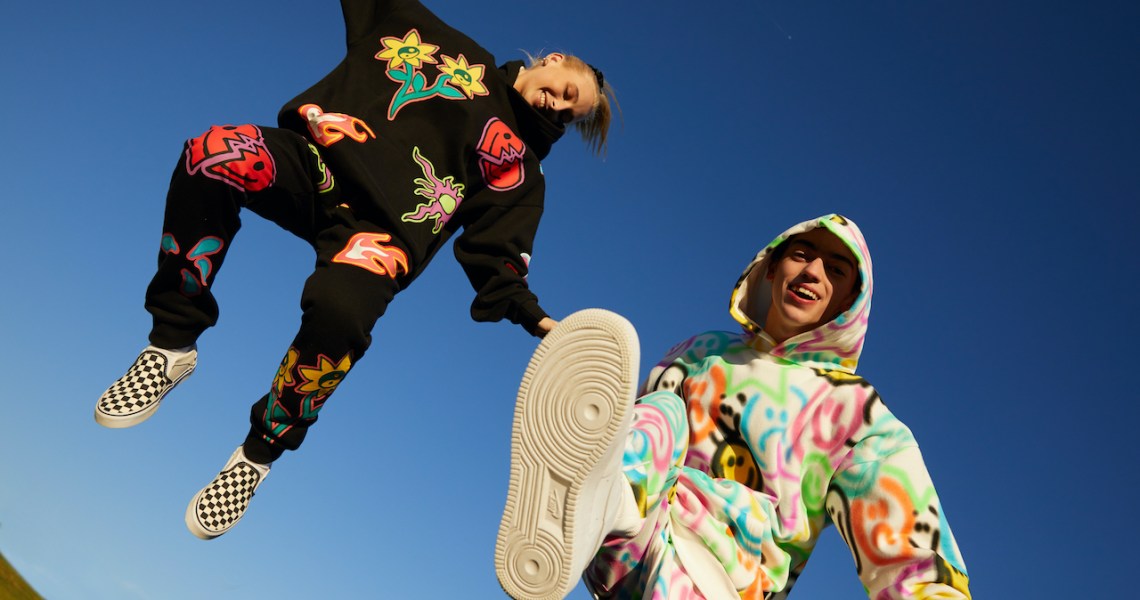While adoption of genderless styles isn’t widespread among brands, the role of gender in fashion is being discussed more than ever.
Earlier this summer, 19-year-old Kendra Scott launched her first-ever men’s collection, in response to customer demand heard through communication with in-store teams, especially in-store stylists, and through the brand’s social media.
“Our customers have been telling us for years that they’re interested in seeing more masculine designs from our brand,” said Scott. “Men already shop in our stores for the women in their life — they make up 38% of our customers. So it’s a natural extension.”
Scott designed the men’s collection with her three school-age sons, who have watched their mother grow the business since they were in diapers. She said she’s seen her traditionally feminine jewelry be worn by men, and the new, more traditionally masculine collection worn by women.
“The beautiful thing about jewelry is that one size fits all — anyone can wear anything they want,” Scott said. “Fashion isn’t about gender, as much as it is about personal style. And [our] brand appeals to all styles [and] all generations.”
With each younger generation, the push for genderless fashion increases, showing the potential for gendered collections to become obsolete in the future. Rob Smith, founder of gender-free fashion brand Phluid Project, said at a WWD event in November 2019 that 56% of Gen-Z consumers shop “outside their assigned gendered area.” And, according to Smith, with buying power of $143 billion, Gen Z leads the pack, in terms of gender-inclusivity acceptance. Millennials, with buying power of $1.4 trillion buying power, come in second.
Norma Kamali rebranded to genderless in 2019. Last September, Marc Jacobs launched a polysexual capsule collection, “Heaven,” which Jacobs described as a line for “girls who are boys and boys who are girls [and] those who are neither.” And youth-focused brands PacSun and Abercrombie & Fitch are shifting to gender inclusivity in marketing campaigns and collections. In December, Harry Styles appeared on the cover of Vogue wearing a full-length gown designed by Gucci’s Alessando Michele; inside the magazine, he wears a kilt-inspired skirt by Chopova Lowena.
Ad position: web_incontent_pos1
“What women wear. What men wear. For me, it’s not a question of that,” Styles told The Guardian last year. “If I see a nice shirt and get told, ‘But it’s for ladies,’ I think, ‘Okaaaay?’ Doesn’t make me want to wear it less, though.”
Tommy Hilfiger, in partnership with activist and actress Indya Moore, is designing clothing free from gender binaries in the brand’s new pre-fall 2021 capsule collection, Tommy X Indya. And nowhere seems further ahead in the shift to genderless fashion than TikTok, where #genderless (50 million views) shows that the movement isn’t the future as much as it is the present.
“Gender-fluid or gender-inclusive clothing can be any clothing, in theory,” Nick Paget, senior analyst at trend forecasting company World Global Style Network, told NBC News. “The notion that clothing as an expression of our personality belongs to one gender or another is the social construct that needs disassembling.”
Fashion designer and LoveSeen cofounder Jenna Lyons told Glossy that, even before the first Gen Zers were born, J.Crew was doing genderless fashion.
“When I started at J.Crew in 1990, we had a line of unisex clothing,” she said. “The majority of our classic pieces were shown on both men and women. And, while the concept of tomboy style is well-accepted, it’s incredible to see that the lines have blurred to the point where men can wear women’s clothes now — at least in New York City. Unfortunately, it’s not that simple in the rest of the country.”
Ad position: web_incontent_pos2
For its part, Lyons’ beauty company, LoveSeen, is emphatic in its marketing that its lashes are for everyone, not just the female demographic. But erasing the womenswear and menswear binary that exists in fashion will be a huge undertaking. That said, according to a December 2020 survey by marketing firm Wunderman Thompson, reported on by CNN, of U.S. consumers ages 16-24, 70% either agreed or strongly agreed that gender doesn’t define a person as much as it used to.
“Fashion mirrors the culture and political beliefs of a generation, often younger people,” Shawn Grain Carter, professor of fashion business management at the Fashion Institute of Technology in New York, told CNN. “If traditional retailers like Nordstrom and Saks are to survive, they must reflect the value system of this generation to gain lifetime loyalty.”
How do we get there? It will take collective buy-in, from designers to retailers to every corner of the fashion industry, to make it happen. And, while progress has been made, universal adoption will take time.
“As a country, we are deeply divided around social ideals, tolerance and acceptance,” Lyons said. “Acceptance, love and understanding are the cornerstones of progress. And we have a long way to go.”


